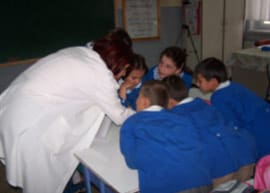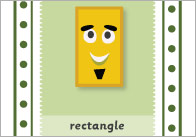What to take into account when organising students into groups

This is part of a series of posts taken from Dr David Smawfield’s catalogue of resources created to help new teachers, or teachers in training, feel comfortable in their new classes and effectively control their new pupils….
Year Group
Grouping by similar year group often makes sense in the classroom, simply because different grades may have different curricula to follow. A further pedagogical assumption, relevant to the classrooms with several year groups is that, often, the older groups will be able to work more independently of the teacher, freeing the teacher to spend more time with younger pupils.
Mixing pupils of different years in the same group can allow the higher-grade pupils to assist the lower-grade pupils.
Ability
The most likely reason for similar ability grouping, is to allow different groups to work on differentiated educational tasks: the more-capable groups studying or working on more-complex or advanced tasks and activities. Another often-used approach in classrooms with several year groups is to group pupils who can work relatively independently together, to free the teacher to work with groups of children who need more attention. However, mixing pupils of different abilities in the same group can allow the higher-ability pupils to assist the lower-ability pupils.
Previous knowledge and experience
It is perhaps worth making the distinction between ability and degree of knowledge and experience. They are often the same, but not necessarily so. In many cases integration will be the ideal, or the goal to strive towards. But differences in previous knowledge and experience may be so great that segregation makes practical educational sense. On a few occasions the nature of the educational topic may make dividing pupils according to this criterion a positive approach. If “The life of a fisherman compared with the life of a farmer” was the topic, it might make sense for children of farmers to work together and brainstorm, for at least part of the activity.
Gender
Cultural considerations play an important part here. In some cultural contexts, girls may feel far more comfortable together and learn more; in others, it would not be acceptable to have mixed gender groups at all. However, it is generally considered desirable to make a concerted effort to avoid gender stereotyping. In many circumstances mixed groups – boys and girls – are to be preferred.
Socio-cultural background
In almost all cases groups comprising a heterogeneous cultural background would be the ideal to strive for and should typically be formed. There may be special educational reasons why this is not practical. Command of language (categorised separately below, in view of its potential significance) is one obvious example. Very occasionally, the nature of an educational topic may make grouping according to socio-cultural background appropriate for some of the work. (See “previous knowledge and experience” above).
Language spoken
In most cases, it will be appropriate to aim towards total integration, but if, say, pupils from a minority group barely speak the predominant language, they may well make better educational progress being grouped together for some activities, especially at first.
Physical needs
If there were more than one disabled child, there would need to be a very special educational or other circumstance to justify disabled children being grouped together on grounds of physical disability alone.
Friendship
There are times when the teacher will be happy for pupils to be grouped so friends can work together. However, if friends grouped together get too distracted from their work, the teacher may wish to separate them! Sometimes the teacher may wish to arrange groups so that someone who is withdrawn or isolated is helped to gain confidence and make friends. On other occasions, friendship considerations will not be an issue.
Behavioural Characteristics
It is likely that on almost all occasions, the teacher will wish to take behavioural characteristics into account in organising groups. Teachers often wish to split pupils who do not get on with each other or who are potentially disruptive. But such qualities as cooperativeness, willingness and abilities to help others, leadership qualities and so on are especially important. The teacher will probably often wish to ensure that pupils with such attributes are evenly spread across groups. On the other hand, if a pupil dominates a group too much this may also be a reason for making some changes.
Mixed grouping
Unless there are good reasons for engineering the composition of groups (and admittedly in many instances there will be) they should be mixed. The teacher can either deliberately endeavour to engineer such a balance or leave it to random chance.
Context
There are forty students in the class. The teacher wants to teach a geography lesson on atlas skills. However, there are only ten atlases available. There is one hour is available for the lesson.
A practical approach
The teacher decides to split the class into two groups and decides to conduct a geography lesson and a creative writing lesson simultaneously. The teacher writes on the chalkboard the title of a story for a piece of creative writing: “You are a deep sea diver. You discover a cave. You enter the cave. What did you find and what happened next?” After some initial discussion of how the students could use their imagination to develop an interesting story, half the class is set the task of writing their essay.
The teacher then introduces the atlas activity to the other half of the class. Students work with atlases, one-between-two. The activity is supported by a worksheet.
The lesson is repeated, the next day. Students who completed the atlas activity take their turn to write an essay about the diver’s adventure, and vice-versa.
Comment
In examples 1 and 2, the number of the pupils in the group is not particularly important. Students are working either individually or in pairs. No interaction takes place between all the members of the group. In this kind of group teaching the number of students in each group does not significantly affect the educational activity.
In the next example, students work together as a whole group. Groups of four to six are the ideal number: enough students to create a group “atmosphere” and “dynamic”.
A group of four to six students allows for several points of view, plenty of debate, and so on, but it is small enough for everyone in the group to feel involved, and for the activity to be manageable. When students genuinely work as a “group”, a group of more than seven students becomes problematic. Not everyone will feel they can contribute actively and the size becomes unmanageable. It will probably be better to divide a group of eight students into two further groups of four.
Dr Smawfield is a senior international development consultant based in the UK and has a strong background in teacher education. He has worked in countries around the world, including Bangladesh, Malawi, Romania and Vietnam and is especially interested in active learning and low-cost teaching aids. You can find out more about his work on his website.
Popular Teaching Resources
Stay Up To Date
Sign up for our newsletter and we’ll let you know when we create new early years resources.





